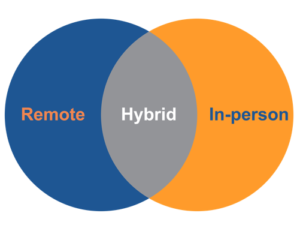December 21,2022
Happy Holidays – The 2022 martinwolf Annual Letter
View a pdf of this letter here.
Dear Clients, Partners, and Friends,
It’s hard to believe we are closing the books on our 25th year in business. Looking back at our extraordinary colleagues past and present, hundreds of clients, and a global network of buyers and friends, I want to start this year’s letter with a sincere “thank you.” This journey surpassed anything I could have dreamed, with unparalleled life experiences.

Since celebrating our official anniversary last January, we’ve been busy. It’s said if you’re not keeping score, it’s only practice, so let’s look at our results:
- Together with our ITX offering, we closed 12 transactions ranging in value from $5M to more than $250M.
- We worked with clients and counterparties in 18 states and 7 countries to buy or sell Cybersecurity firms, Microsoft, Oracle and Salesforce channel partners Managed Services Providers, and Digital Marketing Firms.
- We continued to leverage data science by expanding our proprietary database of buyers and sellers. This structured information, coupled with decades-long industry relationships, allows us to effectively close transactions.
- We launched a global channel partner program this year, memorializing agreements with leading industry organizations to offer M&A services to more than 80 million IT professionals. Most notably our partnership with international media giant Informa Tech Channels.
While global M&A has leveled off from 2021 historic heights, it’s been an incredible year for us. Are there challenges ahead to navigate, particularly on the macro level? Absolutely. But we’re optimistic 2023 will be another promising year for our clients and martinwolf.
Trends We Anticipated
Like 2021, many emerging trends shared in last year’s letter have come to fruition. Two will have lasting effects on our industry and how we work:
- Continued decoupling from Xi Jinping’s China is becoming a reality; and
- A seismic shift to a hybrid work schedule and its ramifications.

China: As the United States decouples from China, we’re seeing an inflationary shift taking place. It’s my opinion we won’t be selling China high-end chips any longer, so they will need to reverse engineer and steal technology, which will result in dual systems and redundancy. We will no longer have a global economy, as the bifurcation between the West and China continues. Domestically we are building multi-billion-dollar semiconductor plants (two in Ohio, two in Arizona, one in New York), with more on the drawing board. It’s a higher cost manufacturing model because we have high energy, labor, and environmental costs. By reshoring, it simply becomes more expensive. And chips are just the beginning. Technology will be more limited because it is a state-owned enterprise in China, which means they look at everything being used for defense and military purposes. Further, what’s going on in China with COVID lockdowns demonstrates heightened supply chain risk. Independent of being a communist country with no rule of law (witness Hong Kong), they’re not a reliable partner, specifically when it comes to how they continue mishandling COVID.

Work Environment: The “work from anywhere/work from home” phenomenon has shifted to a hybrid model. A recent study reveals forty-two percent of computer-based workers say if their current company does not continue offering remote work options permanently, they will look for a job that does. With approximately 16 percent of the United States offices sitting vacant, it’s not work from home exclusively, whether you’re in the office three days a week or don’t go in at all— if you go in full time, part time, whatever, this trend is here to stay. New office space is not being leased because they’re still going through the sublet stage, which in cities like San Francisco is very high, is accounting for approximately 30 percent of office space availability.
There are no construction loans, new building, or new space leasing because people are trying to sublet their old spaces. The damage to small-medium businesses in urban centers is material. The old model (specifically in New York City) was high cost in terms of taxes equated to high-end service. Today, the services aren’t there because they can’t operate with people coming in a few days a week and offices being leased 50-70 percent of the time. And when it comes down to it, Gen Z and Millennials don’t want to come into the office much at all, which changes the entire equation. Clearly office space partially used is less efficient by almost every measure, but IT professionals being recruited is no longer dependent on location. HP’s $3.3B acquisition of Poly furthered the permanence of this shift in workplace norms. What’s more, the benefits of a hybrid model include productivity, work-life balance, and improved mental health.
martinwolf adopted the hybrid plan in 2021 and has tallied great results.
Big Winners
 Drumroll please….the company best positioned for the future is Microsoft. You may sense déjà vu because they were best positioned last year. They’re also the best positioned this year, and they’ll continue to be the best positioned until or unless they squander their structural advantages (government regulators notwithstanding). Microsoft’s investments in Azure and a world-class cloud strategy dominates discussions among large enterprise decision makers, not to mention Microsoft’s leadership in digital transformation, gaming, AI, and big data. In addition, their business applications — such as Dynamics, Power BI, CRM — are very capable relative to the mainline on-premise and cloud ERP.
Drumroll please….the company best positioned for the future is Microsoft. You may sense déjà vu because they were best positioned last year. They’re also the best positioned this year, and they’ll continue to be the best positioned until or unless they squander their structural advantages (government regulators notwithstanding). Microsoft’s investments in Azure and a world-class cloud strategy dominates discussions among large enterprise decision makers, not to mention Microsoft’s leadership in digital transformation, gaming, AI, and big data. In addition, their business applications — such as Dynamics, Power BI, CRM — are very capable relative to the mainline on-premise and cloud ERP.
Much of this advantage flows from Redmond through their broader ecosystem. The business applications core strength is not so much technical, but the way they leverage partners. Whether its large channel partners like Avanade, medium-sized partners like HSO (a Carlyle company), or small partners like Dynamic Quest. There is no doubt the continued consolidation of the Microsoft Cloud Partner ecosystem only strengthens Microsoft’s long-term dominance. If you’re a Microsoft partner, you’ve probably noticed because suddenly everyone wants to talk to you – including us. Our firm has sold more Microsoft Channel Partners than anyone in our industry based on strong demand from our private equity and strategic buyers.
Big Deals
Looking back at 2022, we’ve all read the headlines: Mass tech layoffs including HP, Stripe, Salesforce and others, rising inflation, supply chain challenges, an impending recession, and rising interest rates. It’s true that the markets are recalibrating—and that does mean an economic shift. But despite broader economic uncertainty, the M&A market notched big deals over the last year:
Announced:
- The largest closed M&A acquisition of 2022 was Microsoft’s announced acquisition of Activision Blizzard. The acquisition, which was announced in January for $68.7 billion, is being branded as the beginning of a new phase for the gaming industry.
 Broadcom announced its pending $61 billion deal to buy virtualization giant VMware.
Broadcom announced its pending $61 billion deal to buy virtualization giant VMware.- Adobe announced a $20 billion deal of the design software startup Figma.
Closed:
- Twitter was taken private by Elon Musk, closing at $44 billion.
- Oracle bought Cerner for $28 billion.
- AMD’s $50 billion acquisition of Xilinx closed in February of 2022 – the largest acquisition in the history of the semiconductor industry. By August, Xilinx’s revenue accounted for more than 50 percent of its $6.44B 2Q22 revenue.
In fact, annual global M&A deal volume is comparable to 2017 and 2020’s performance—driven largely by North American activity. Tech M&A was particularly strong, up since 2021 even if volume slipped in the latter half of 2022 as buyers adjusted to changing macro conditions.
There are ample opportunities for buyers to make smart strategic plays especially as organic growth weakens—and we expect opportunistic, transformative deals to increase as companies look to build resiliency in today’s economic conditions.
Big Changes
While we are not out of the woods, leading indicators suggest inflation may have peaked. For buyers in our space, inorganic growth through M&A continues to be the best path toward increasing revenue and expanding their customer base. We remain bullish that motivated buyers, whether strategic or financial, will find a way to close deals in 2023. If there is a recession, we are cautiously optimistic that it will be modest and driven by tightening monetary policy rather than broader structural concerns.
Key data we expect to influence 2023
- Strategic Buyers: They will be more acquisitive than they have been historically relative to private equity because they can manufacture costs savings operationally and create marketing strategies. However, overall activity will be tempered by caution and performance sensitivity.
- Private Equity: Substantial dry powder reserves will drive deal activity, but with interest rates higher, Private Equity returns will be lower. The way PE buyers will manufacture adequate returns is by being more conservative on price, or at the very least placing more emphasis on deal structure to mitigate risk.
- Market Liquidity: The sheer number of IPOs and SPACs in 2022 was driven by the zero cost of capital and signaled there was too much liquidity—as evidenced by so many going upside-down and getting creamed. In 2023 there will be fewer of both, which is a positive catalyst.
 Economy: Based on historical analogs, there is an 80 percent chance that our economy will have a hard landing based on history with inflation and the Fed’s response. The Fed believes raising interest rates will chill economic demand, but it’s anyone’s guess as to how much job loss will correlate to reduced wage inflation. Wage inflation is the last holdout, housing, materials, food and energy are now significantly lower, and inflation has been broken. We’re relying on the same group to engineer a soft landing that insisted for too long that inflation was transitory—so it may be a bumpier road than expected.
Economy: Based on historical analogs, there is an 80 percent chance that our economy will have a hard landing based on history with inflation and the Fed’s response. The Fed believes raising interest rates will chill economic demand, but it’s anyone’s guess as to how much job loss will correlate to reduced wage inflation. Wage inflation is the last holdout, housing, materials, food and energy are now significantly lower, and inflation has been broken. We’re relying on the same group to engineer a soft landing that insisted for too long that inflation was transitory—so it may be a bumpier road than expected.- Layoffs: Tech over hired in the boom period, and as a result we’re seeing unfortunate but predictable layoffs. Few big names are unscathed—but what you need to know is that the companies tightening their belts will be doing less business with their partners and vendors. Be prepared and manage risk accordingly.
Middle-Market IT “Equity”: Most of the liquidity in the lower-middle market comes from distributors in the form of payable financing. This includes inventory and AR Financing. They provide product, credit, time, and place. However, this only addresses the debt side of the balance sheet — it doesn’t address the equity side. The people who can figure out how to create a vehicle facilitating equity into their channel will be the winner.
Big Opportunities
For those revising their strategic plans and vision statements, we see continued opportunities for value creation in three IT-enabled categories:
- Managed Service Providers: Pure-play MSPs with 70 percent recurring revenue continue to command lucrative multiples based on high margins and strong revenue visibility. For many, it’s faster and more efficient to buy vs. build.
- Security: Witnessing the recapitalizations this year of leading firms such as CyberMaxx and The Herjavec Group sets the stage for continued focus on this space. Recruiting engineers to defend systems and networks from cybercriminals is a material challenge as firms attempt to grow their own security stack. Compliance and high maintenance costs also point to buy vs. build.
- Artificial Intelligence: Whether it’s used to streamline your processes and aggregate your data, or envisioning it as a service offering, if you haven’t made a significant investment in AI you’re behind. Machine Learning and Deep Learning are the second coming of software. AI opportunities are now in all walks of IT, ranging from CRM and Cybersecurity to personal digital assistants and streamlining the human decision-making process. For the foreseeable future, AI will command value high multiples and strong valuations from buyers.
Big Thanks
As I said in my preamble, we would not be where we are without our clients, partners, global network of buyers, friends of our firm, and our loving families. As we sprint into our 26th year, I’m excited for what’s to come—and there’s no one I would rather spend it with.
Happy Holidays, and Happy Selling!

PS: For those interested, we’ve attached a consolidation of year-end letters from past holidays to commemorate our 25th Anniversary.



